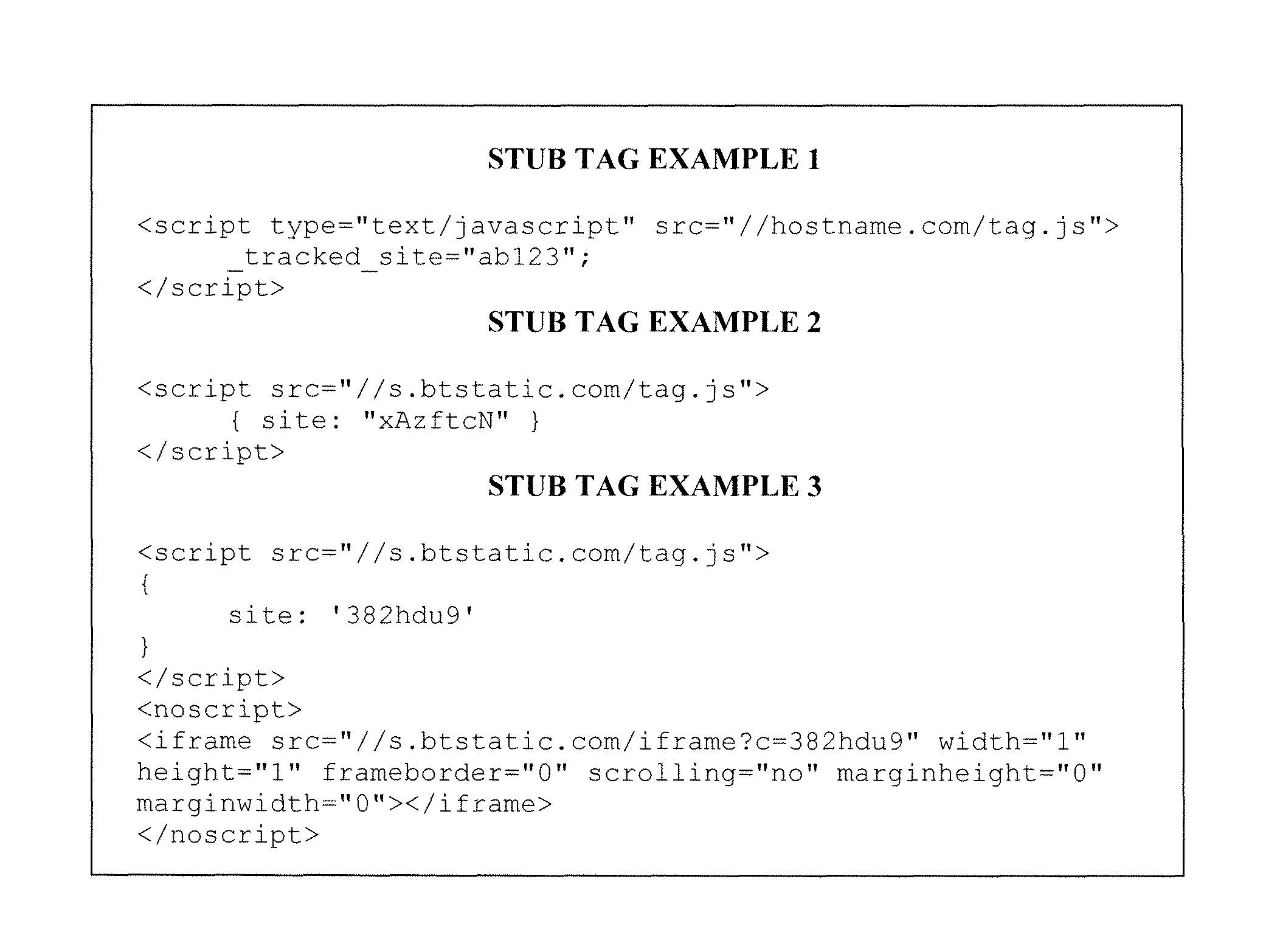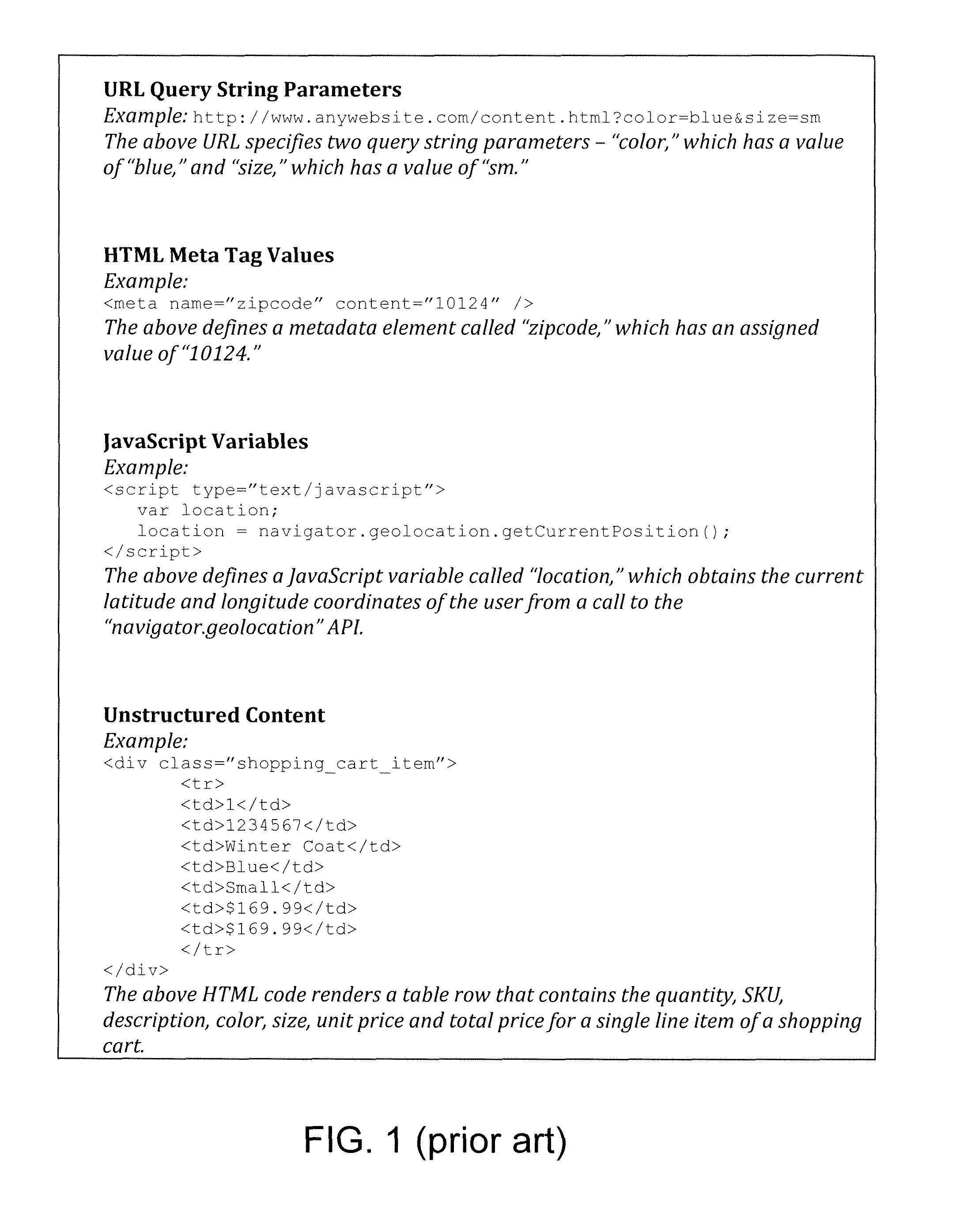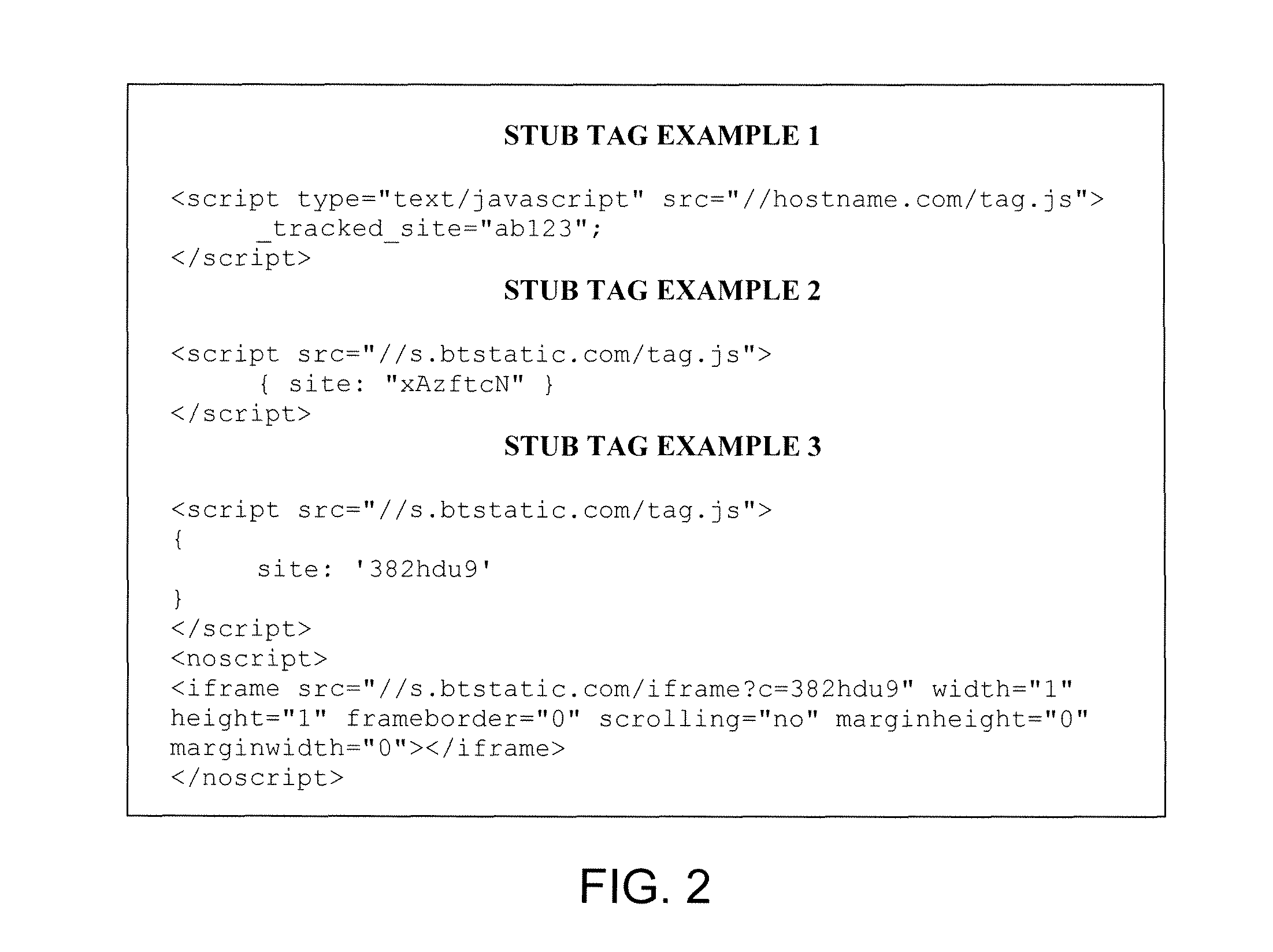Unified collection and distribution of data
a data collection and data technology, applied in the field of electronic publishing and commerce, can solve the problems of affecting site performance, requiring multiple tracking tags to be processed, and unable to extract explicit data elements deterministically from the site/application without custom data integration code,
- Summary
- Abstract
- Description
- Claims
- Application Information
AI Technical Summary
Benefits of technology
Problems solved by technology
Method used
Image
Examples
Embodiment Construction
[0049]Embodiments of the present invention include a system and method for providing a data binding tag, also referred to as a stub tag, to the website / application code. The stub tag collects explicit data elements, and provides a mechanism by which representations of data receiver tracking tags can be dynamically unified and written into the website / application code that is being evaluated by a user's device. The system and method integrates with each data receiver's existing data collection mechanisms, and matches collected data elements to the unique identifiers required by each data receiver's collection mechanism.
[0050]Referring now in more detail to the exemplary drawings for purposes of illustrating embodiments of the invention, there is shown in FIG. 2 non-limiting examples of the stub tag. Optionally, the basic structure of the stub tag can be nothing more than what is in the examples of FIG. 2. In EXAMPLES 1 and 2, the stub tag only has a section. In EXAMPLE 3, the stub t...
PUM
 Login to View More
Login to View More Abstract
Description
Claims
Application Information
 Login to View More
Login to View More - R&D
- Intellectual Property
- Life Sciences
- Materials
- Tech Scout
- Unparalleled Data Quality
- Higher Quality Content
- 60% Fewer Hallucinations
Browse by: Latest US Patents, China's latest patents, Technical Efficacy Thesaurus, Application Domain, Technology Topic, Popular Technical Reports.
© 2025 PatSnap. All rights reserved.Legal|Privacy policy|Modern Slavery Act Transparency Statement|Sitemap|About US| Contact US: help@patsnap.com



